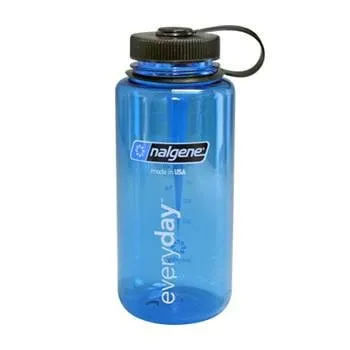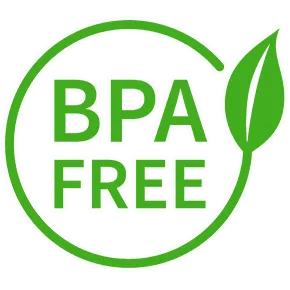
Wherever I can, I use tap water instead of bottled. For most flights, I'll carry my empty bottle through security and fill it up on the other side. Airports with bottle filling stations are my favorite. I've even filled my water bottle up with tap water from the Flint airport (I was assured the water was safe) . Over the holidays, I left my trusty nalgene bottle at my family home. As I'll be able to pick it up the next time I visit home, I saw no need to buy a new one. Until then, I'll just be using the near identical bottle I keep with my camping gear. In fact, there is only one major difference between the two bottles. The new one is "BPA free", while the old one most definitely has BPA. Since I planned to use this bottle for the next month, I decided to take a second look at BPA.
Time for a little chemistry

Chemistry has never been my favorite subject (I prefer physics), but it pops up often in my work as a materials engineer. I don't work with food grade plastics, so I had to do a little reading. BPA stands for Bisphenol A (chemical formula (CH3)2C(C6H4OH)2 ). BPA is the most common member of the bisphenol family. Bisphenols are chemical compounds with two two hydroxyphenyl functionalities [1]. All that means is that bisphenols have two functional groups to bond with other organic compounds.

BPA can also be used on thermal paper (think receipts) and also the epoxy resin liner for can and food pouches. Unlike the BPA used in polycarbonate [2], thermal paper contains unpolymerized BPA. This means that tiny amounts of BPA can be directly transmitted to your skin [3]. Overall, about 2.5 billion pounds of BPA are used each year in the U.S. alone! About 5% of that amount ends up in food contact [4].
Is BPA really that bad?
Based on some government reports and news articles from 2008 - 2010, BPA got a lot of bad press. Because BPA has a similar structure to estrogen, agencies were concerned about the health consequences of high BPA levels. BPA can leach out of the bottle, especially with hot liquids. However, there never really was a clear link establishing BPA to any health issues in people. In 2015, the European Food Safety Authority actually published a statement that current BPA levels posed no health risk [5]. Also, plastics manufacturers simply switched to a different bisphenol to replace BPA. Many are now using the very similar bisphenol S and slapping a "BPA Free" sticker on their products [6].
The solution
Based on my reading, I don't really see a difference between using my old or new water bottles. Ultimately, I would like to move away from plastic altogether. I have switched from plastic food containers to glass. I now do most of my cooking on cast iron instead of nonstick pans. I have tried using a stainless steel bottle in the past and did not like the poor insulation and metallic taste. If you have a recommendation for a bottle that you like, please let me know in the comments.